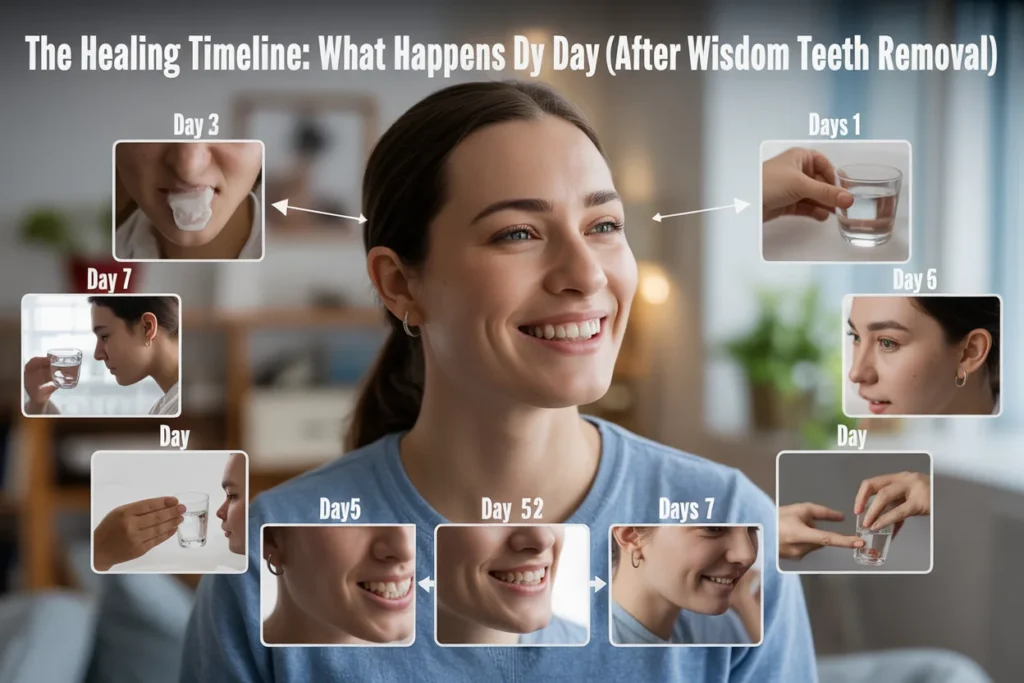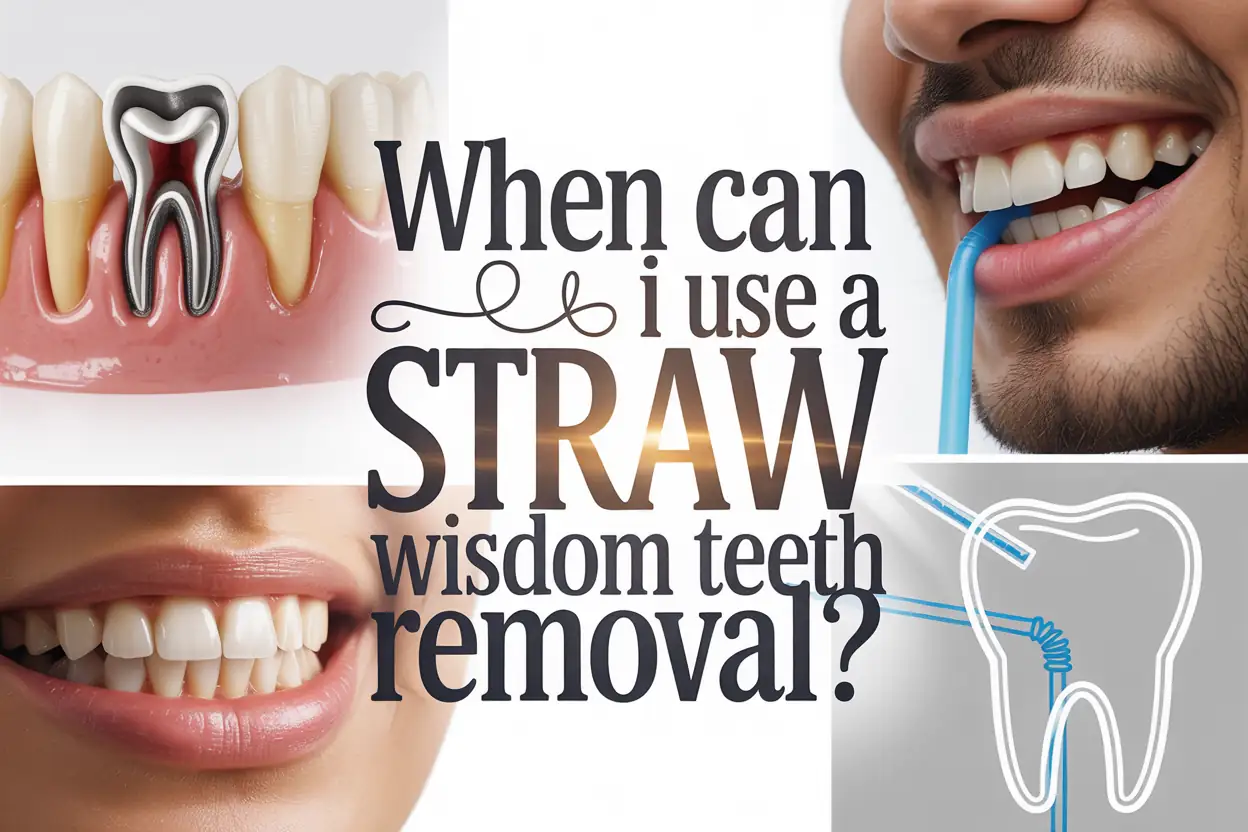So, you’ve had your wisdom teeth out. Or maybe you’re just nervously Googling ahead of time, iced coffee in hand, wondering when can I use a straw after wisdom teeth removal? Totally fair question — honestly, one of the first things I thought about post-surgery was how soon I could get back to sipping smoothies without tilting my whole face like a confused flamingo.
Here’s the thing though: the answer isn’t straightforward. It depends on a bunch of factors, and I know that’s not super satisfying. But stick with me — we’ll talk through what actually happens in your mouth after a tooth extraction, why straws are surprisingly risky during the healing process, and when you can reasonably expect to reintroduce your favorite sipping tools back into your routine.
Why Straws Are a Bigger Deal Than You’d Think

When can I use a straw after wisdom teeth removal? So, the issue with using a straw after wisdom tooth removal isn’t about the straw itself — it’s about suction. More specifically, the suction that happens when you sip. That little vacuum effect can pull at the fragile blood clot that forms in the empty socket where your tooth used to be.
That clot is your body’s natural Band-Aid. It protects the exposed bone and nerve endings, helps with healing, and blocks out bacteria and food debris. Lose it, and you risk developing a dry socket — a painful complication that, from what I’ve heard (and unfortunately, experienced once), feels like a deep, throbbing kind of ache that radiates through your jaw and into your ear. I wouldn’t wish it on anyone.
Dry socket happens when the clot is dislodged or dissolves too early, exposing the bone underneath. Straws, along with smoking, vigorous rinsing, and sometimes even spitting, can all up your chances. So yeah, something as innocent as a straw can mess with that critical early stage of healing.
Alright, But When Can I Use a Straw Again?
Here’s the short-ish answer: most dentists will say to wait at least 7 to 10 days before using a straw — sometimes even up to two weeks depending on how your healing is going.
But there’s no one-size-fits-all timeline. Some people heal faster. Some deal with unexpected setbacks like persistent bleeding or signs of infection. And if multiple teeth were removed — or they were impacted — you might need more downtime.
When can I use a straw after wisdom teeth removal? For me, it was a little over a week before I even wanted to use a straw. By then, the swelling had eased, I could open my mouth wider without wincing, and the surgical sites felt less… vulnerable, I guess? Still, I was overly cautious — sipping gently and kind of holding my breath like it might blow the clot out by sheer will.
Let’s break this down into more bite-sized timelines, though.
The Healing Timeline: What Happens Day by Day

Day of Surgery
- Skip the straw.
- Definitely skip the straw.
- Honestly, just focus on stopping the bleeding with gauze pads and resting.
- Stick to small sips from a cup, ideally with something cool — ice packs help too.
Day After Surgery
- Still no straw. That blood clot is delicate.
- Stick to a soft food diet: broths, ice cream (if you’re not dairy-sensitive), pureed foods.
- Cold packs are your best friend for swelling.
First Few Days (Days 2–5)
- No straws yet. Seriously.
- Warm salt water rinses (starting about 24 hours in) help with healing but do them gently — no aggressive swishing.
- You’ll probably still have mild pain. Use prescribed pain medicine or counter pain relief meds as needed.
Day 6 to 10
- This is usually when the risk of dry socket begins to drop off — When can I use a straw after wisdom teeth removal?
- If you’re feeling better — less swelling, minimal discomfort — you might be tempted to reintroduce normal activities.
- But…still avoid straws for now, especially if you’re not sure the clot is stable.
Week 2 and Beyond
- When can I use a straw after wisdom teeth removal? If everything looks and feels good, and you’ve had no signs of complications after wisdom teeth removal, you’re probably okay to start sipping carefully.
- Maybe don’t go straight into bubbly drinks or carbonated beverages. Start with something calm — like water or apple juice.
Pro Tip: Talk to Your Dentist (Yeah, Really)
It’s boring advice, I know. When can I use a straw after wisdom teeth removal? But your dentist knows the details of your specific procedure — how tricky the extraction was, if bone tissue was exposed, if any sedative dressing was used, how your sockets looked, etc. They’ll probably give you personalized post-operative instructions, and following them is… well, kind of crucial.
Plus, if you’re still unsure by week two — maybe the extraction sites are sore, or your healing feels slow — checking in during regular office hours isn’t a bad idea. Better safe than dealing with a severe complication later.
A Few Things to Watch For Before You Use That Straw
You want to make sure you’re not experiencing:
- Persistent or excessive bleeding
- Foul taste or signs of infection
- Considerable pain beyond mild discomfort
- Swelling that doesn’t seem to be going down
- Bad breath or a weird sensation near the tooth socket
When can I use a straw after wisdom teeth removal? Any of those could be signs of post-operative complications — including dry socket or even adjacent teeth infections. In that case? No straw. No spicy foods. No normal eating habits just yet. Just give your mouth the proper care it needs.
How Straws Fit Into the Bigger Recovery Picture?
Think of it this way: using a straw too soon is like trying to run before the cast comes off. It feels harmless, but you’re interfering with a deeper process. The healing tissues, protective layer of blood clot, and the bone socket underneath all need time.
When can I use a straw after wisdom teeth removal? The full recovery process after wisdom teeth removal can take a couple of weeks. Sure, most of the pain is gone within the first 7–10 days, but proper healing can stretch on — especially with multiple extraction sites or decayed wisdom teeth that needed extra work.
Give it time. Your future self will thank you.
Other Recovery Tips (Not Straw-Related, But Still Useful)
- Stay hydrated. When can I use a straw after wisdom teeth removal? Sip from a glass, not a straw. Drink plenty of fluids, but avoid alcohol after wisdom teeth and acidic foods.
- Stick to soft foods. Ice cream, pureed soups, bland food like mashed potatoes or yogurt — they’re your friends in week one.
- Avoid crunchy foods or chewy foods like chips after wisdom teeth removal. Food debris can irritate the surgical sites.
- Skip intense physical activity. At least for the first few days. Strenuous activities can increase blood pressure, which could disrupt clot stability.
- Use cold and moist heat. Cold packs help with swelling in the early days; moist heat can ease jaw stiffness a little later.
- Warm salt water rinses. Gentle ones, a few times a day. Just a teaspoon of salt in warm tap water — nothing fancy.
Also Read: When Can I Stop Worrying About Food Getting Stuck in Wisdom Teeth Holes
Conclusion
If you’re asking, “When can I use a straw after wisdom teeth removal?” — the safest bet is after 7–10 days, only if everything seems to be healing well. Be cautious. Your oral health — and your future smoothie happiness — depends on it.
And hey, if you have to tilt your head and sip awkwardly from a glass for a week or two, you’re not alone. We’ve all been there. Sometimes with gauze pads still stuffed in our cheeks.
Frequently Asked Questions
1. Can I use a straw 3 days after wisdom teeth removal?
Honestly? No. That’s too soon. The blood clot is still super fragile then.
2. What if I accidentally used a straw?
Try not to panic. Watch for signs of dry socket — pain that gets worse, bad taste, or increased bleeding. If anything feels off, call your dentist.
3. Is using a straw worse than spitting?
Both can cause suction, but straws tend to create a stronger vacuum. So yes, slightly worse. Avoid both in the early days.
4. Can I drink smoothies without a straw?
Yep, just use a spoon or sip from the side of a cup. It’s awkward, but it works.
5. When is the earliest I can safely use a straw?
For most people, somewhere between 7 to 14 days after surgery — but only if healing is going well.
6. What are signs that my sockets are healing properly?
Decreasing pain, no bleeding, and the ability to chew soft foods without discomfort. Swelling should be going down too.
7. Can a straw cause a dry socket even if I feel fine?
Unfortunately, yes. Even if you feel okay, the clot can still dislodge if you’re not fully healed.
8. What about metal or reusable straws — are they safer?
Not really. It’s the suction that’s the issue, not the material. So avoid all types early on.
9. Is it okay to use a straw for cold drinks only?
Nope. Temperature doesn’t change the suction risk. Cold drinks can help with swelling, but use a glass.
10. Why is recovery so different for everyone?
It depends on things like how the teeth were removed, your body’s natural healing process, overall health, and even things like how closely you follow aftercare instructions.



